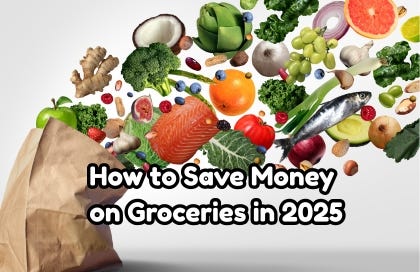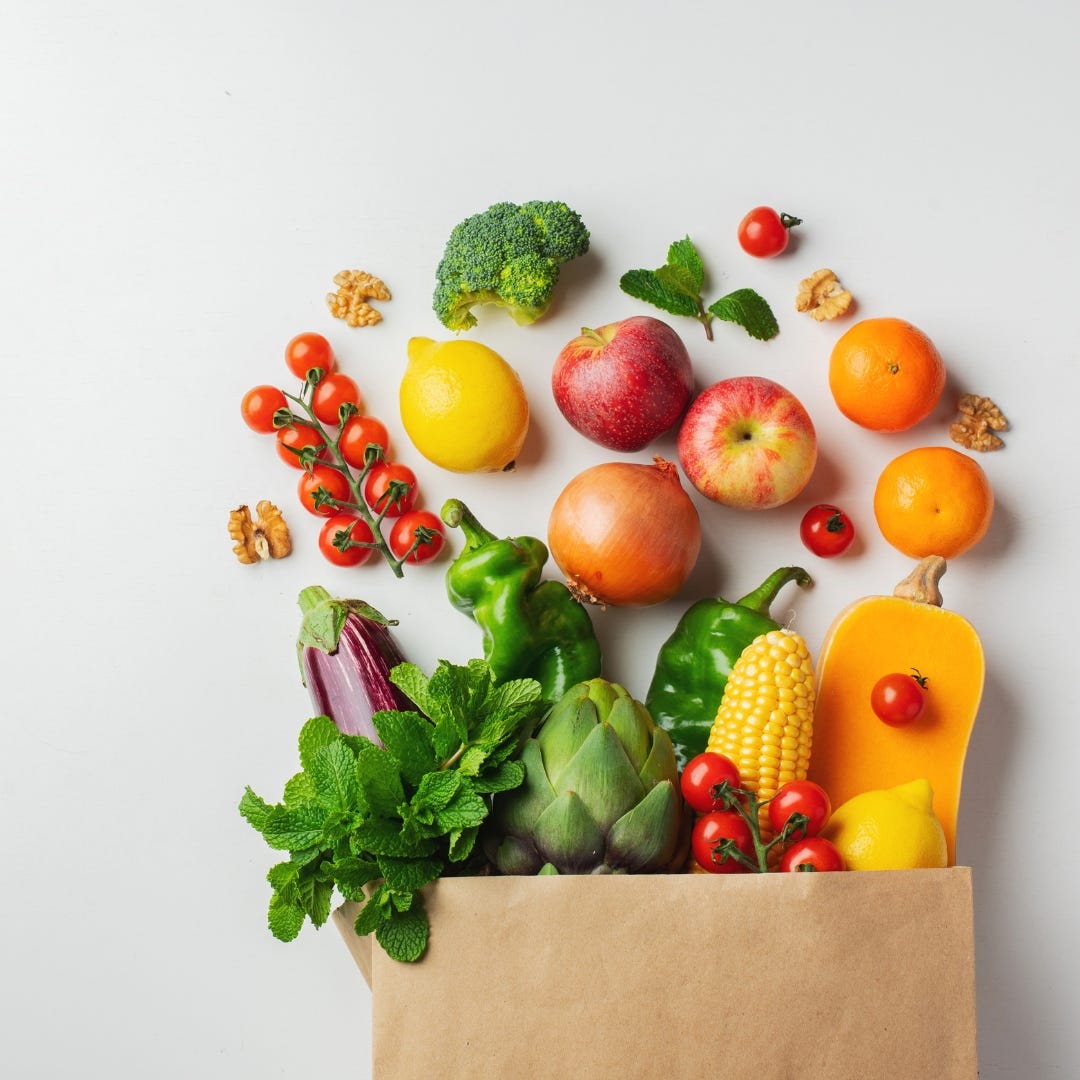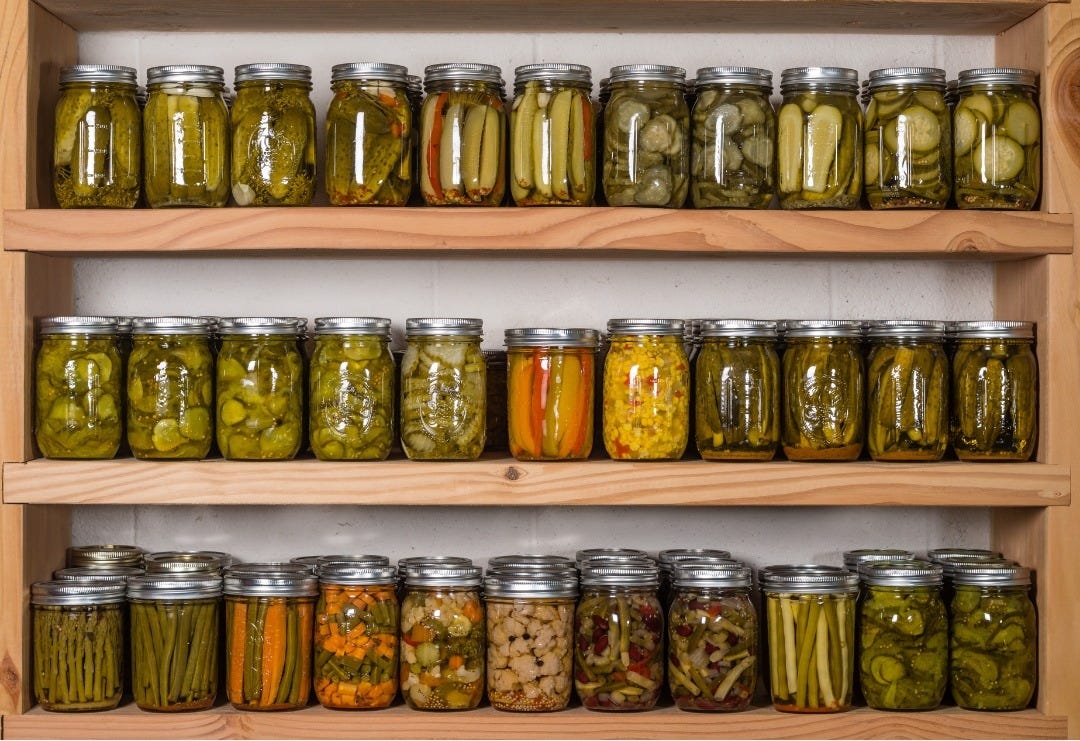Last time I went to the grocery store, I was shocked at the prices—and it doesn’t look like they’re slowing down anytime soon. In all honesty, I think they’ll keep climbing, whether it’s a slow creep or a sudden jump, depending on whatever the government is up to behind closed doors. That’s why now’s the time to take control of your food and your grocery costs.
Let’s dive into how you can save money on groceries without sacrificing quality or nutrition.
Why Are Groceries So Expensive Right Now?
If you’ve stepped foot in a grocery store recently, you’ve probably noticed the prices feel out of control. Between inflation, supply chain drama, and changes in farming and production, 2025 has brought some of the highest food costs we’ve seen in a long time.
A big part of this is caused by extreme weather, rising fuel costs, global market chaos—you name it. And truthfully, sometimes it feels like the government uses these “crises” to push an agenda, and we end up paying the price.
Take the bird flu story, for example. Millions of birds were culled almost overnight. Of course, that drove egg prices way up. And now with the immigration shifts, some are saying we could see fruit prices soar if there’s a shortage of field workers—especially in places like California.
Consumer habits are changing, too. More people are trying to buy organic or locally sourced foods. I’ve seen that firsthand. Raw milk around me used to be $5 for a half gallon—now it’s up to $7.50 or even $14 for goat milk depending on who you’re buying from. That’s supply and demand right there.
But here’s the thing—I trust local economies to correct themselves way faster than whatever mess the national system is in. The closer you are to your food, the better off you’ll be.
So yes, food is expensive. But there are ways to fight back.
Start With a Plan
One of the biggest mistakes I see people make is walking into the store without a plan. Grocery stores are designed to get you to overspend. Everything from the layout to the flashy displays is set up to mess with your brain.
At my local Walmart, right at the checkout, there’s a wall of snacks—hand pies, candy, ready-to-eat meals—conveniently placed right at kid-level. You can guess how that goes if you’ve got kids with you.
Here’s my tip: Plan your meals before you shop. Doesn’t matter if you go weekly or bi-weekly—just know what you’re going in for. That food you “just grabbed” ends up lost in the fridge, rotting before you remember you bought it. Meal planning saves your wallet and your sanity.
How to Shop Smart Without Cutting Corners
Watch the flyers. They might seem old-school, but grocery flyers are your friend. I still check mine every time they land in the mailbox. If chicken’s on sale, guess what? That’s what’s for dinner this week. Use the flyers to plan your meals and your food storage strategy.
Buy in bulk—strategically. Staples like rice, beans, flour—those make sense to buy in bulk. Perishables? Only if you’ve got a way to store or preserve them. We’ll talk food preservation in a bit.
Shop seasonal and local. Farmers’ markets, co-ops, and CSA boxes can save you serious money—plus the food is fresher. I buy heirloom produce in bulk at the end of the season because local farmers are just trying to clear out. That’s when I can tomatoes, make salsa, juice, and prep sauces for winter.
Compare unit prices. Grocery stores are sneaky with packaging. Always check the price per ounce or pound on the shelf tag. And if something is marked wrong, they have to honor it—so check your receipts!
Stick to the staples. Oats, potatoes, lentils, eggs, and meat go a long way. Buying real ingredients instead of boxed junk is not only cheaper—it’s better for you. A bag of Doritos costs more per ounce than a dozen eggs. It’s wild.
The Power of Food Preservation
Now, let’s talk about something that can seriously slash your grocery bill long-term: food preservation. If you’ve never thought about canning, fermenting, or freezing in bulk, 2025 is the year to start.
Seriously, once you start preserving food, there is no going back because you will see how simple it is, how much money it saves you, and how it helps you build a food storage. Let’s run through some of the food preservation methods that can help you clean up your grocery bill.
How do you preserve food?
Canning vegetables, sauces, and even meats can cut your grocery costs dramatically. When you buy produce at peak season—either from your grocery store or a local farmer—or maybe you have your own garden you’re paying rock-bottom prices.
Preserve it, and you’ve got months of cheap food. Like I mentioned for the farmers around me, when the season is ending and they are still swimming in produce, they will give you an even better deal than peak season. You can get quality produce for dirt cheap. Water bath canning is great for jams and tomatoes, while pressure canning works for meats and soups.
Freezing is a wonderful method of food storage because of how simple it is. If you are buying meat in bulk, portion it out and freeze it. Make soups, broths, and stews ahead of time and freeze them for quick meals. A deep freezer can be a game-changer when it comes to preserving food for the long haul.
Dehydrating is great for herbs, fruits, and even jerky. Instead of paying premium prices for dried fruit snacks, you can dehydrate apples, bananas, or even citrus peels for teas. Dehydrated soup mixes can be stored for emergencies or quick dinners.
Fermenting in your own kitchen is a great way to save money. Quality fermented foods can come with a steep price tag at the store when you can make them at home for cheap.
Sauerkraut, kimchi, yogurt, and pickled vegetables last for months and actually improve in flavor over time. Fermentation is an ancient technique that not only preserves food but also boosts gut health. So if you are into fermented foods, take the time to make them at home. Get the fermentation weights or whatever gear you need for your ferments. It’s so much nicer because of the flavor you get to control.
Cut Out the Middleman
Here’s the truth: every time your food passes through another hand—whether it’s processing, packaging, shipping, or stocking—you’re paying more. That’s just how the system works. The grocery store isn’t just charging you for the food, they’re charging you for the convenience of not having to make it yourself. But here’s the thing: once you realize how easy some of this stuff is to make at home, you’ll never look at those price tags the same way again.
Let’s break it down:
Bake your own bread. Flour is still relatively affordable, and with just a little time and patience, you can be making loaves that taste better than anything you’ll get at the store. Sourdough is basically free once your starter is going—just flour and water, that’s it. I started with one jar and now it’s just part of the routine. And you can flavor it, shape it, and make it fit your style. Way more satisfying than buying overpriced loaves full of preservatives.
Make your own snacks. This is a big one. Store-bought snacks are highway robbery and most of them are filled with junk. I started making popcorn on the stove with just kernels and olive oil—it’s crunchy, filling, and pennies compared to the pre-packaged stuff. I top it with butter and dip it in my homemade ranch dressing and it hits the spot every time. You can also make sourdough crackers, energy bites, fruit leathers, and granola bars at home for way cheaper. Plus, no seed oils or fake flavors.
DIY dairy at home. If you’ve got access to milk—cow or goat—you’re golden. I make my own yogurt in the Instant Pot (yes, it has a yogurt button), and it’s stupid easy. You can also make butter just by whipping heavy cream until it separates, and boom—you’ve got butter and buttermilk. Kefir and cheese are also doable at home with a few starter cultures. Store-bought versions of these are expensive and often filled with additives, but when you make it yourself, you know exactly what’s in it.
Grow your own herbs. Those little plastic clamshells of basil or parsley at the store are overpriced and don’t last long. Instead, get a few pots and grow your own herbs right in your kitchen window. Basil, cilantro, oregano, thyme—whatever you use the most. Fresh, right at your fingertips, and once you start snipping your own herbs instead of tossing out wilted bunches from the fridge, you’ll wonder why you ever paid for them in the first place.
Small Homestead Moves = Big Grocery Savings
Now look, I get it—not everybody has a big plot of land, a barn, or the ability to go full-on homesteader. But here’s the good news: you don’t need all that. Even the smallest steps toward self-sufficiency can make a real dent in your grocery bill and give you a little peace of mind while you’re at it.
Backyard chickens for eggs. The best time to get chicks is in early spring, when they have a better chance of survival. You’ll need a brooder with a heat lamp, quality feed, and secure housing. By the time they mature in 4-6 months, they’ll provide you with a steady egg supply, reducing grocery costs significantly. We have been seeing egg prices skyrocket lately, especially for quality eggs, so you can circumnavigate that by having your own chickens.
Grow what you can, where you can. You don’t need a farm to grow real food. If you’ve got a porch, balcony, or sunny window, you can grow something. Container gardening is great for tomatoes, lettuce, peppers, and herbs. Raised beds give you more space if you’ve got the yard for it. Vertical garden setups are awesome for small spaces. You’d be shocked at how much food you can grow in just a couple of planters when you pay attention and care for your crops. And when it comes time to harvest, that’s food you didn’t have to buy—and it’s fresher than anything on a store shelf.
Foraging and bartering. Learn what grows naturally in your area. Wild greens, nuts, and berries can supplement your diet for free. Bartering with neighbors can also save money—you provide eggs, they provide fruit or homegrown honey. I use to trade milk for strawberries with my neighbor and that was awesome. It builds community, too, which we’re honestly missing in today’s world. I forage for mushrooms and berries in the spring and summer, and it is also so soothing for mental health to get out and go forage.
Raise small livestock if you can. Rabbits and quail are perfect for folks with limited space. They’re quiet, clean, and don’t need a ton of room. Rabbits especially are super efficient meat producers—people overlook them, but they’re one of the best options for backyard meat. Quail start laying eggs in just 6–8 weeks and need way less space than chickens. If you’re serious about cutting down your grocery bill and becoming less dependent on the system, these little animals can go a long way.
Saving money on groceries in 2025 is about more than just clipping coupons—it’s about being intentional, learning new skills, and taking back control of what you eat.
You’ve got to choose your hard: Struggling with overpriced, low-quality food from the store, or putting in a little work now to help yourself and your family down the road.
Start small. Build as you go. And trust me—once you take back control, there’s no going back.
—Thanks to Gubba Homestead
💭 Just a quick personal note—
If my writing has sparked new thoughts, helped with your research, or simply offered a new way of looking at things, I’m genuinely grateful you’re here. Substack is where I share my work full-time, and it’s also how I support myself and my family.
If you feel called to support what I do, becoming a paid subscriber makes a huge difference. It helps me keep going—and in return, you’ll get access to extra content, early posts, and deeper dives I only share with subscribers.










